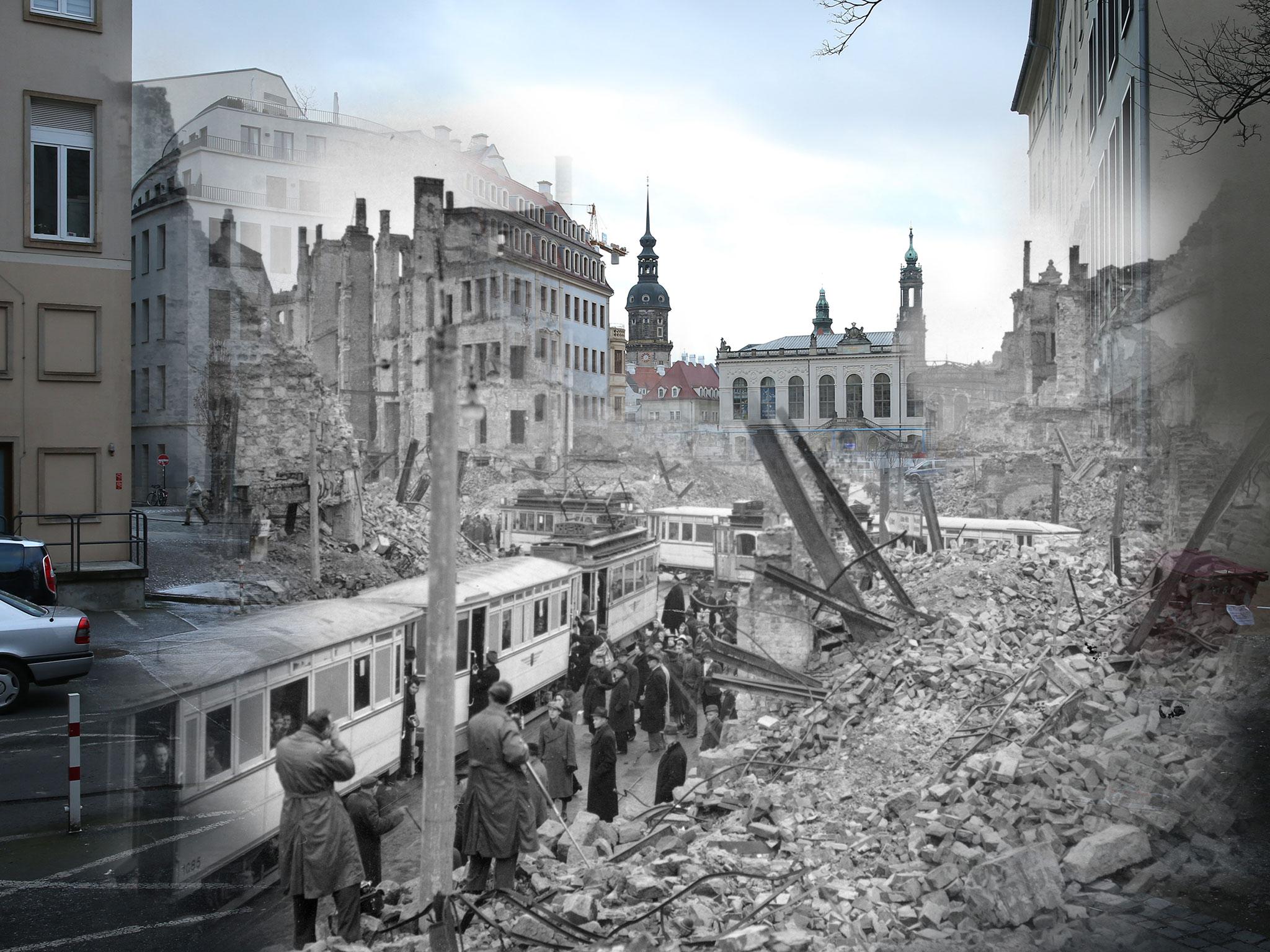
Allied bombing during the Second World War killed around 25,000 people in the German city of Dresden and turned tens of thousands of buildings into rubble exactly 75 years ago today.
British forces dropped 1,400 loads of explosives all over the area – with the help of 800 RAF Lancaster Bombers – in the hope that they would hit the Nazis in attacks that happened from 13 to 15 February 1945.
Another 200 bombers from the US continued the indiscriminate ruin of the city with at least 950 bombs during the two days.
Stunning past and present composite images have been created of landmarks to show the scale of damage and how much work had to be done to rebuild the city.








The famous opera house and opulent museum buildings in the old city were all destroyed, as well as the Church of Our Lady – which buckled under its own weight after it was blasted with intense heat from a firestorm.
Flames from fires made air rise quickly, which created a vacuum on the ground that produced winds strong enough to uproot trees and suck people into the flames.
Historians said that the destruction was all for nothing as many lives were lost with little effect on the war that finally ended less than seven months later.
Many died of collapsed lungs and the death toll is said to be higher than 25,000 due to the likelihood that bodies were charred before they had disintegrated.
The then-British prime minister Winston Churchill and US president Franklin Roosevelt bombed eastern Germany in preparation for Soviet forces, led by Joseph Stalin, to advance from the east.
The atrocity of the war’s effects on Dresden are immortalised in Kurt Vonnegut’s Slaughterhouse-Five. He was present at the time of the bombing so his most known novel could be considered a semi-autobiographical work.
This article was first published 13 February 2015







